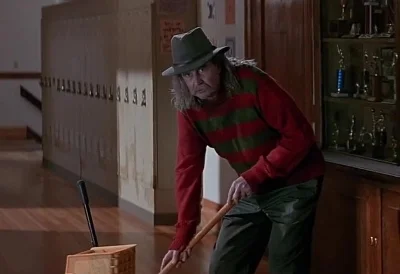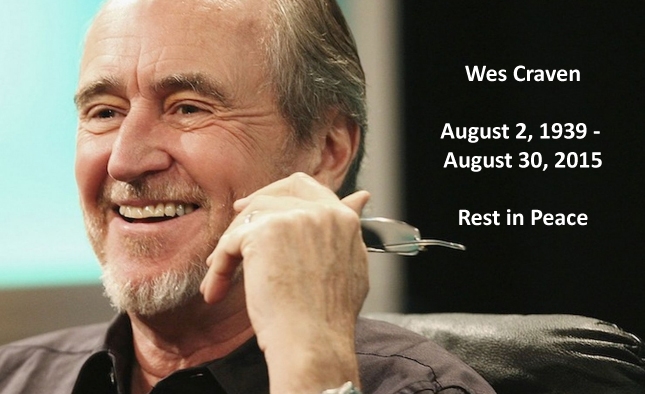The Man of Our Nightmares: Wes Craven
The Man of Our Nightmares: Wes Craven
By Andy Bartsch
Imagine you’re somewhere between the ages of five and ten, it’s early in the evening, and you’re home alone with your older brother. You look outside and you see a man about a hundred from the window looking at you. The man as dirty skin and a filthy dark brown fedora. A torn red shirt under a long black coat. The ominous figure in the dark looking at you is enough to make your skin crawl. You decide to ignore the man and continue to play while the parents are away. But curiosity gets the best of you, for only moments later, temptation kicks in and you look outside the window for a second time, only to be greeted by the face of the scary man just outside the window! Your heart leaps out of your chest. Instinct tells you to run away, so you do, calling out for your older brother. When you find him, you tell him of the scary man looking into the window. Your brother grabs a baseball bat and you follow him to the window, but the scary man is long gone. Several years later, you use this scary man as the inspiration as a villain for a film your making, and you name him after that bully at school who torments you daily. You name him Freddy.
The story I just told you, although somewhat exaggerated and is clearly hearsay, is an example of how legends are born. Wes Craven was a talented director and writer who took the most basic fears of our childhood nightmares and turned them into creative fuel for his films. He took his idea of a boogeyman and through a mixture of fantastic ideas, a group of people who were willing take creative and financial risks, good and bad luck, Craven created a new movie monster that would become as iconic as Dracula or the Frankenstein monster.
In the middle of the 1980s, when the trend of every slasher movie killer had to be silent, faceless, and use a big knife, Wes Craven dared to be different and gave his villainous Fred Krueger a personality, a face, and glove. When the unwritten rule in horror movies was, “if you’re young, you do drugs or have sex when you’re supposed to be innocent, you’re gonna die”, Craven did what he does so well and turned the idea on its head. In Nightmare on Elm Street, the idea was, your PARENTS did something terrible, and now because you ARE so innocent, you’re gonna die because of it.
After the first film, Craven had no creative control over the Elm Street franchise, and was frustrated to not only see Freddy Krueger turn from a terrifying boogeyman into a violent cartoon character but also all the money New Line Cinema was making in merchandising. In 1993, Craven had a frank and honest conversation with Robert Shaye, founder of New Line, and not only were things amended, but Shaye asked Craven if he was interested in directing for them again. The result was Wes Craven’s New Nightmare, the seventh Nightmare on Elm Street film. This time, the film takes place in the “real world”, where Freddy is a fictional film character but wants to escape into the real world. Where does he start? The cast and crew of the original Nightmare. Craven dug into his bag of tricks and used similar tools and techniques to scare us again, using the stuff that scared us as children and using it against us.
Taking the horror film industry and pointing a finger at them would soon become a staple of his films, particularly in his next film, Scream. Scream started a trend in self aware horror films, where the characters talk about the cliches they find themselves in and went on to spawn three successful sequels and a television show.
Little known fact: Craven often cosplayed as his own charcters.
Any one can make a film. It takes a special kind of filmmaker to produce movies that will be remembered for decades. Wes Craven will be remembered for providing us frightening nightmares, being able to laugh at the conventions he helped create, and being able to re-invent an industry that was struggling. He will be missed.










